One of Mumbai’s oldest and stunning churches came up because a former Governor was too lazy to travel for Sunday mass. The latest episode of Walk With Mid-day explores Christ Church. Here are snapshots of the walk. Catch it in full on mid-day online
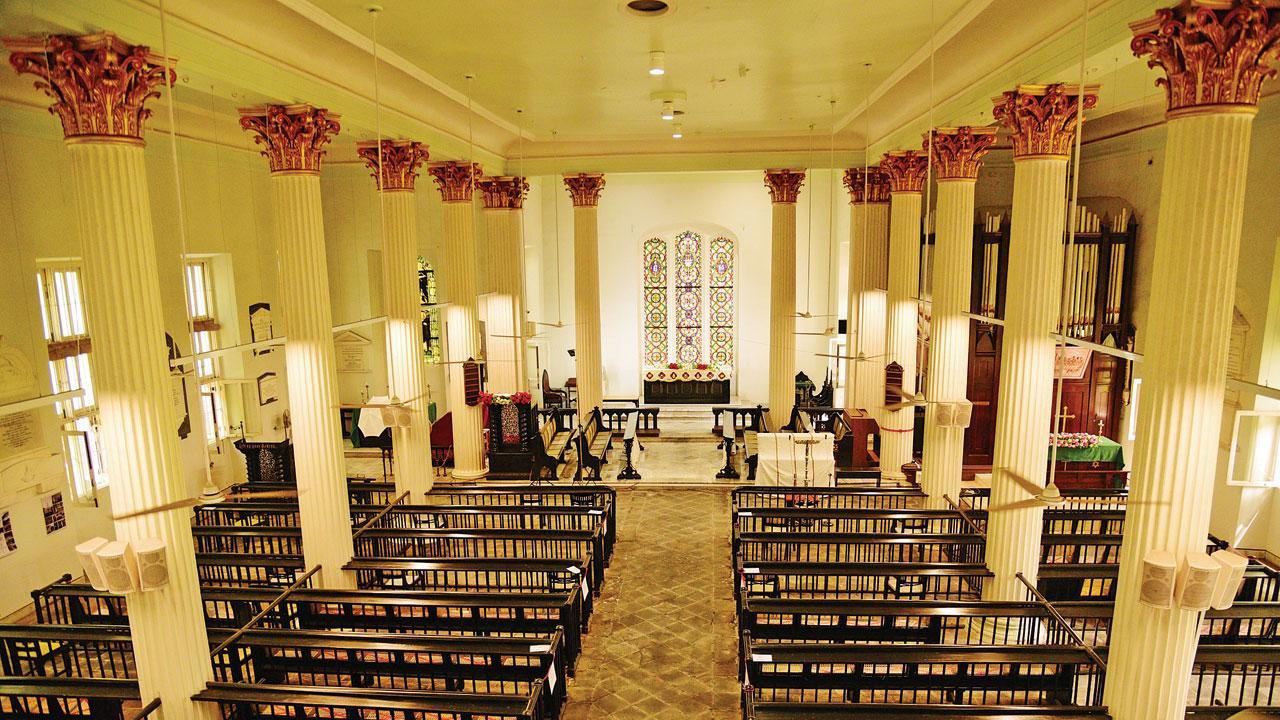
The 12 fluted Corinthian cast-iron columns, with Corinthian capitals. They were shipped from England and were a gift to the church. Pics/Pradeep Dhivar
The striking four fluted Doric columns and white façade that greet the first-time visitor when they arrive at Christ Church is bound to make them draw comparisons with a larger structure in Washington DC — The White House. Turns out both structures reflect the similar Neoclassical architectural style. While Byculla’s Christ Church was built in 1833, the official residence of the President of the USA was ready in October 1792.
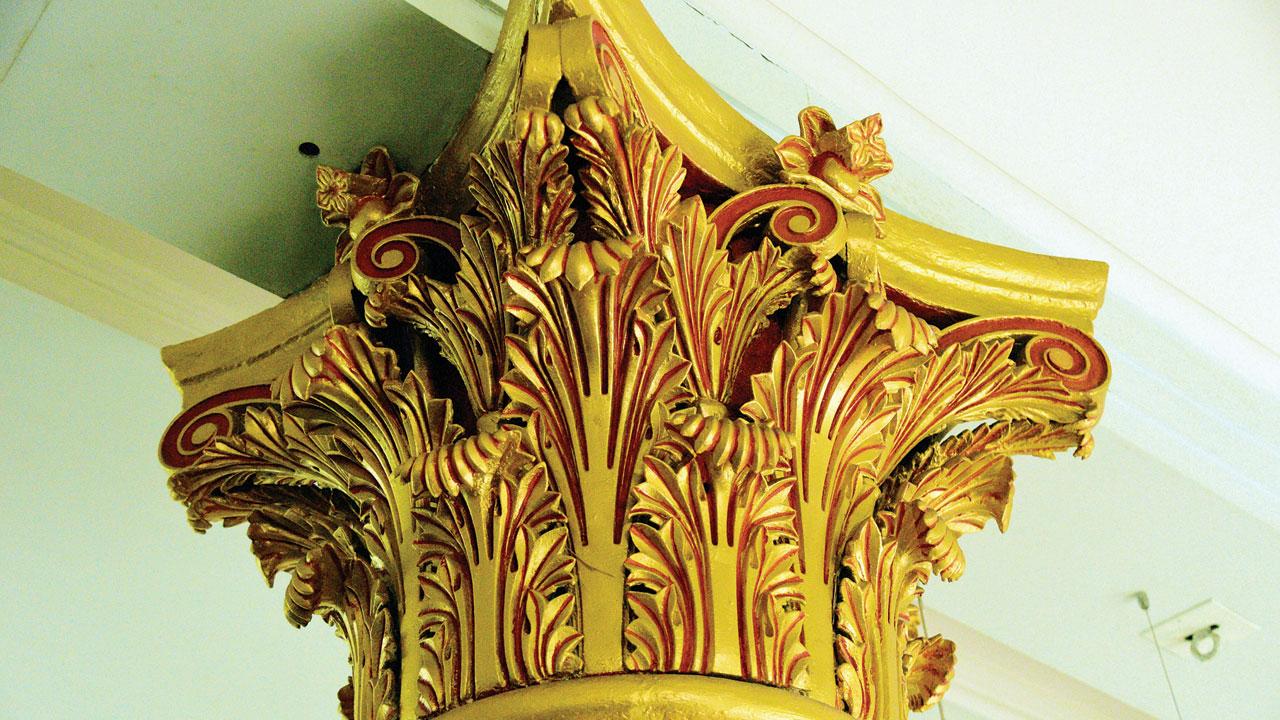
mid-day’s readers can discover more about this historic landmark in an in-depth video walkthrough in the second edition of Walk With Mid-day Season 2 with Features Editor, Fiona Fernandez. Since Covid rules didn’t allow us to invite readers, you can walk the route virtually with us on our YouTube channel.
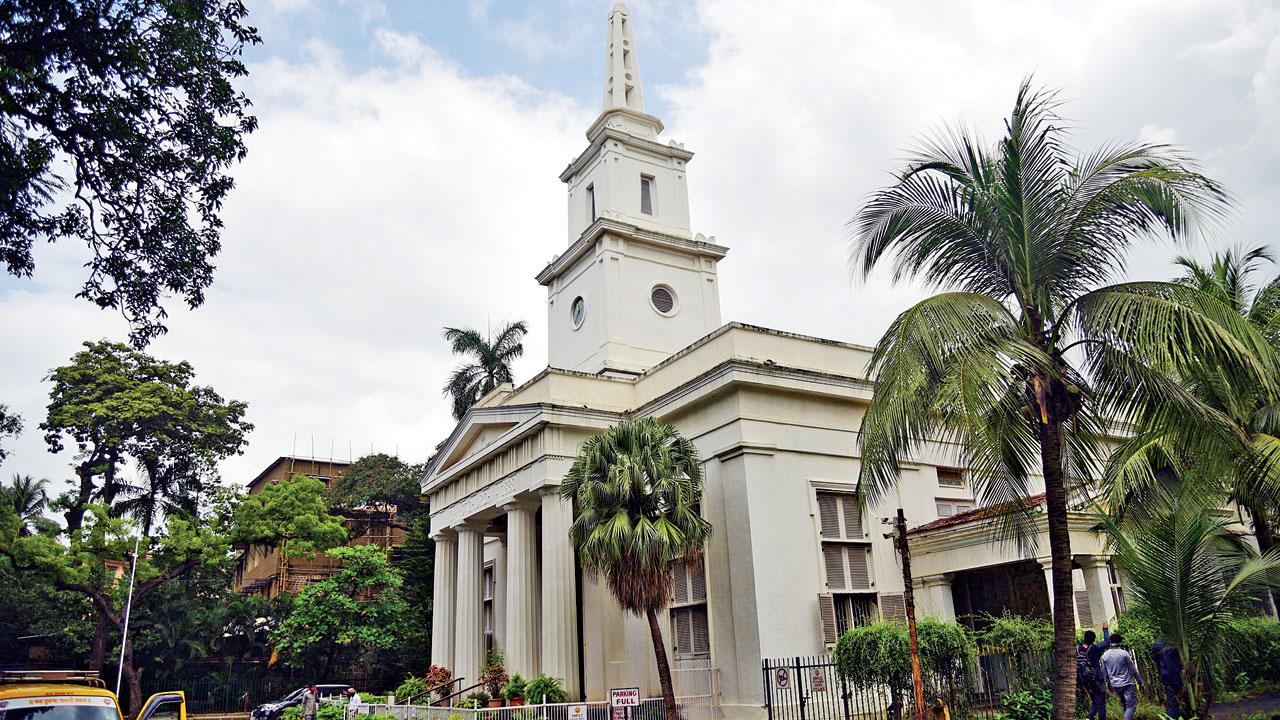
The Christ Church Trust initiated a privately funded restoration in two phases and roped in Vikas Dilawari Associates (VDA) as their conservation architect firm. The first phase was from August to December 2015, while the second phase extended from April to December 2016. In November 2017, UNESCO honoured this conservation project with an Award of Merit for its sensitive restoration
In the early 1800s, Byculla was quite the ‘it’ neighbourhood — wide roads, palatial mansions, a racecourse, and the swish Byculla Club. Along with Parel, it emerged as the most developed neighbourhoods outside of the Fort walls. The move by the Governor to shift his residence to Parel (today’s Haffkine Institute complex) had a lot to do with its rise in prominence. Soon enough, influential Bombaywallahs, including Sir David Sassoon built his grand palace — Sans Souci Mansion in Byculla (today’s Masina Hospital).
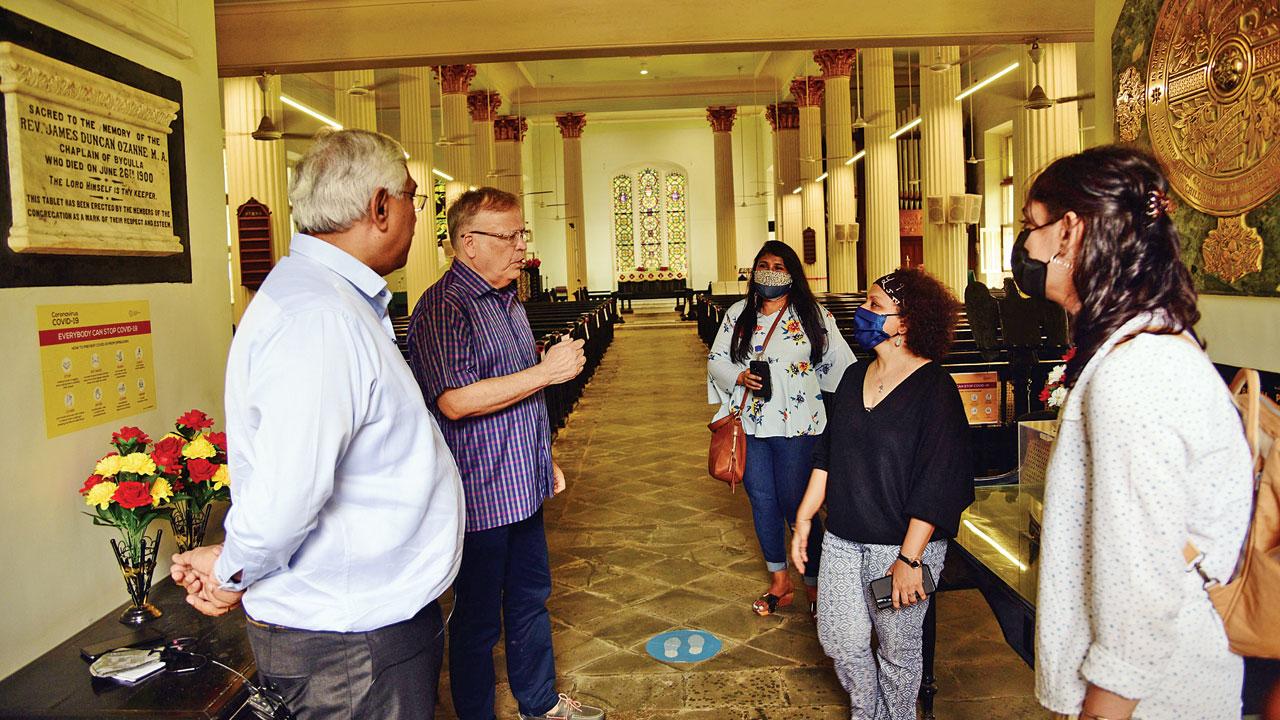
Trustees Rudolf Woodman (second, left) and Christopher Gomes (left) explain how the church restoration was initiated
When the Governor resided inside the Fort, he would attend mass at St Thomas Cathedral, but after he moved to Parel, this wasn’t convenient, and so as part of the church development programme that was implemented by then Governor Mountstuart Elphinstone (1819-27), Christ Church came into the mix.

The baptismal font depicts insensitive interventions using gold paint as opposed to the original (close-up) of the Porbandar stone
By the time the Governor’s mansion in Parel was in use, this ‘chapel of ease’ was required, and Christ Church was identified to ensure the Governor didn’t have to tread all the way to St Thomas Cathedral to hear mass. Costing Rs 17,000, the foundation stone of Christ Church was laid by the Right Honourable Earl of Clare after whom Clare Road (now Mirza Ghalib Road) is named. The Church was opened for worship on August 10, 1833.
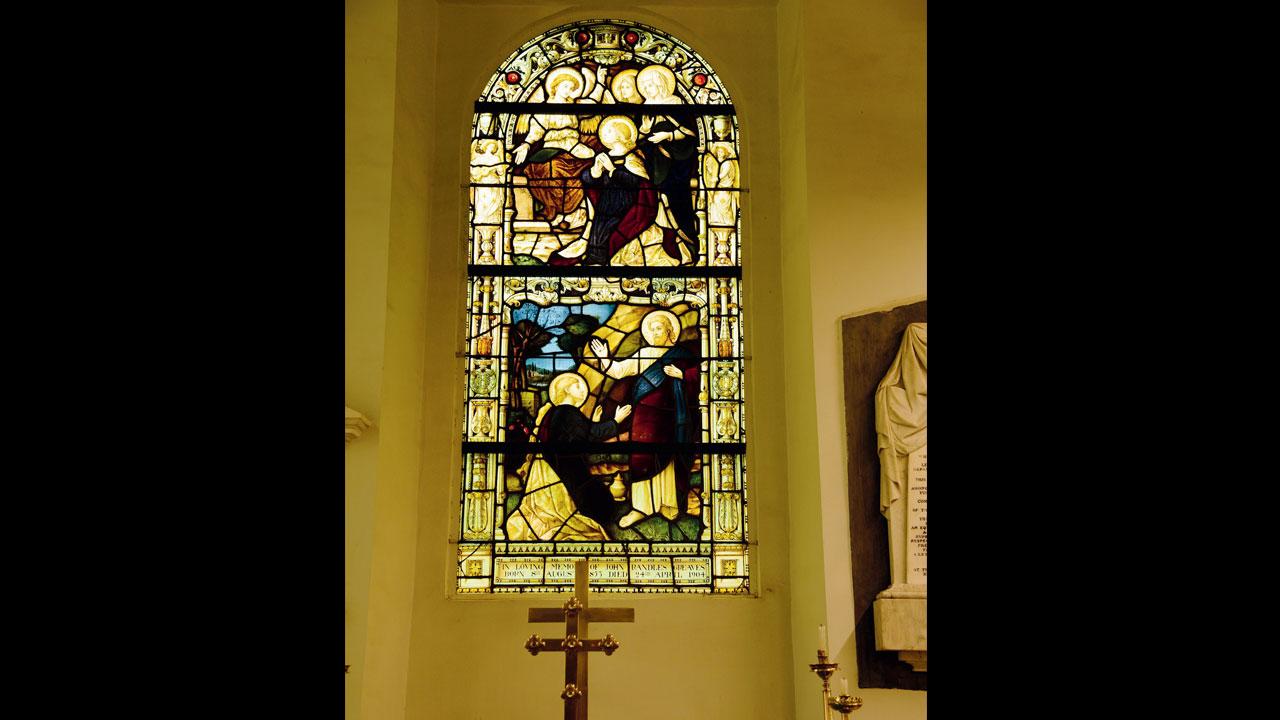
The second panel dedicated to John Randles Greaves (died: 1904) shows Biblical references
Stepping inside the church, the striking stained glass panels, 12 cast iron columns with Corinthian capitals, Burma teakwood furniture immediately draw one’s attention. The original flooring gives a sense of time-tested grandeur while the marble plaques offer fascinating insight into the life and times of the British who lived in Bombay. Look out for names like that of Governor Sir Robert Grant, after whom Grant Road railway station was named, as well as other administrators and men of service.
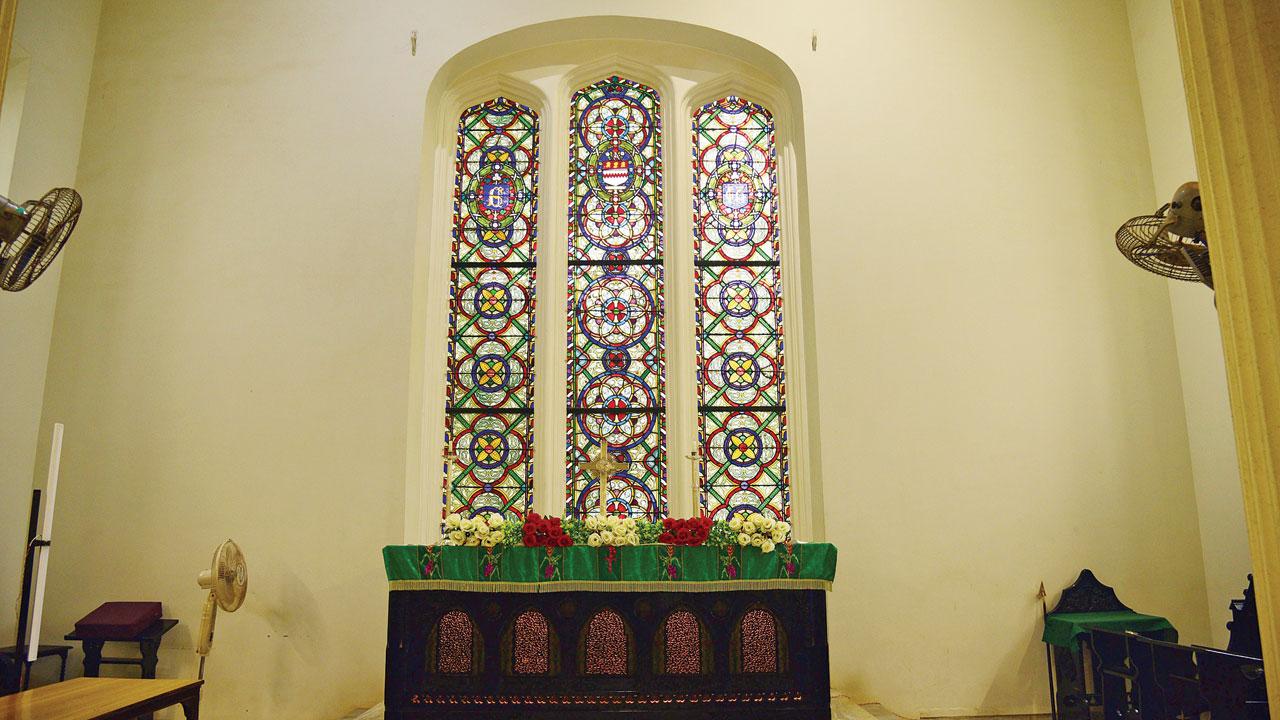
The central panel installed as a memorial to Spencer Compton (died: 1866) depicts floral and repetitive patterns
As the church bell tolls from the belfry, it’s easy to teleport oneself to a Sunday morning — of horse-driven carriages grinding to a halt, the congregation singing in celebration, and a Governor attending mass on time.
Watch the video here:
 Subscribe today by clicking the link and stay updated with the latest news!" Click here!
Subscribe today by clicking the link and stay updated with the latest news!" Click here!










